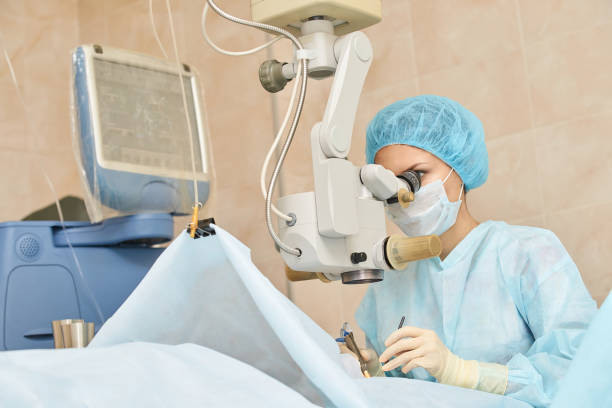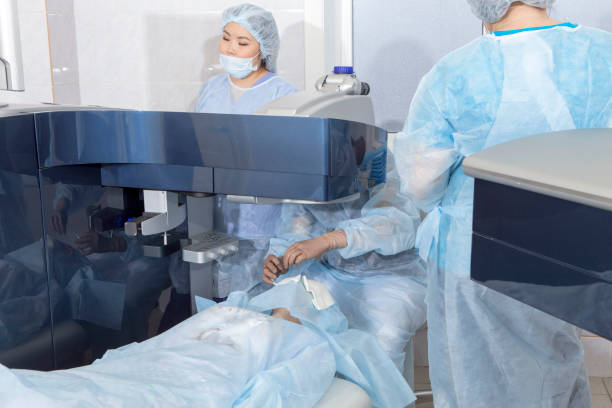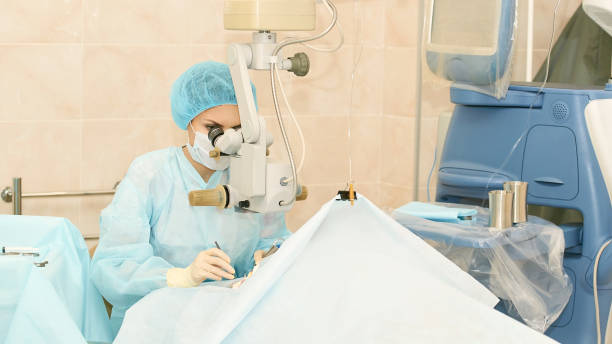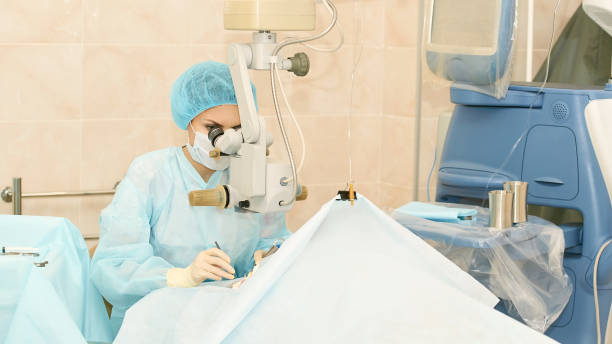Introduction
If you’re thinking about vision correction surgery, you’ve probably heard of both PRK (Photorefractive Keratectomy) and LASIK. While LASIK is more common, PRK is still a safe and effective option for many people. Knowing the pros and cons of PRK can help you decide if it’s the right type of eye surgery for your vision needs.
In this blog post, we’ll explore the key benefits and drawbacks of PRK. You’ll learn how it works, how it stacks up against LASIK, and which patients are the best candidates. Let’s take a closer look at why PRK may be the right choice for you.
What Is PRK Surgery?
PRK is a type of refractive eye surgery that helps correct common vision problems such as nearsightedness (myopia), farsightedness (hyperopia), and astigmatism. During the procedure, a special laser reshapes the cornea—the clear, front surface of the eye—to improve how light focuses on the retina. This helps reduce or even eliminate the need for glasses or contact lenses.
Unlike LASIK, which creates a thin flap in the cornea, PRK works by gently removing the outer layer of the cornea, called the epithelium. This layer naturally grows back during the healing process. PRK is often a better choice for people who have thin corneas or certain eye conditions that make LASIK less safe or effective.

PRK Pros: Why Consider PRK Surgery?
PRK offers several key benefits that can make it a smart option for people seeking vision correction. It’s especially helpful for those who may not be good candidates for LASIK. Let’s take a closer look at the top reasons why PRK might be the right choice for your eyes.
1. Ideal for Thinner Corneas
PRK is often recommended for people with thinner corneas, where LASIK may not be safe. Unlike LASIK, PRK doesn’t involve cutting a flap in the cornea. This makes it a safer option for those with less corneal tissue, helping reduce the risk of surgery-related complications.
Who Benefits:
- People with thin corneas
- Those with past corneal injuries
- Individuals with irregularly shaped corneas
2. Lower Risk of Dry Eyes
One of the common side effects of LASIK is dry eye, but PRK has a lower chance of causing this issue. Since PRK doesn’t require creating a flap in the cornea, it usually results in less damage to the tiny nerves that help control tear production. This means your eyes may stay more comfortable during recovery.
Who Benefits:
- People who are prone to dry eyes
- Patients who have had dry eye symptoms after LASIK or other eye surgeries
3. More Suitable for People with Certain Eye Conditions
PRK is often a better choice for individuals with specific eye conditions that make LASIK less ideal. This includes people with dry eyes, irregular corneas, or past eye injuries. By removing the outer layer of the cornea instead of cutting a flap, PRK can create a smoother surface and improve vision in cases where LASIK may not be safe or effective.
Who Benefits:
- People with irregularly shaped corneas
- Patients with a history of eye injuries or surgeries
- Individuals who do not qualify for LASIK due to certain eye health issues
4. No Risk of Flap Complications
One big advantage of PRK is that it doesn’t involve creating a corneal flap, like LASIK does. This means there’s no risk of flap-related issues, such as shifting or tearing, during healing. For people who are active or work in jobs where eye injuries are more likely, this makes PRK a safer and more dependable option.
Who Benefits:
- Athletes and those who play contact sports
- People in high-risk jobs, such as law enforcement or the military
- Individuals with active lifestyles who want to avoid flap complications

PRK Cons: What Are the Drawbacks of PRK?
Like all surgical procedures, PRK has some drawbacks you should think about before moving forward. While it offers many benefits, it’s important to understand the potential downsides. Let’s take a closer look at the disadvantages of PRK and what they could mean for your recovery and results.
1. Longer Recovery Time
A key downside of PRK is that it takes longer to heal than LASIK. Since the outer layer of the cornea is removed during surgery, it needs time to grow back. This healing process can cause some discomfort and blurred vision in the first few days. It may take several weeks to see clearer vision, and full results can take a few months.
What to Expect:
- Mild to moderate eye discomfort for a few days
- Blurry or hazy vision during early healing
- Vision may take 1–3 months to fully stabilize
- Daily use of eye drops and other medications to support healing
2. More Post-Op Discomfort
Compared to LASIK, PRK usually involves more discomfort during the recovery period. Since the top layer of the cornea is removed, it takes time to heal, which can lead to irritation, a burning feeling, or mild pain. These symptoms are common in the first few days after surgery and may require extra care.
What to Expect:
- Sensitivity to light, especially in bright settings
- Blurry vision and glare while healing
- Use of pain relief drops or over-the-counter medications to manage discomfort
3. Vision Improvement Takes Longer
PRK generally requires more time to show noticeable improvements compared to LASIK. While LASIK patients often experience clearer vision in just a couple of days, PRK recovery is slower. It may take several weeks, or even a few months, for your vision to fully stabilize, and you might need to wear corrective lenses during this time.
What to Expect:
- Gradual improvement in vision over several weeks
- Temporary need for glasses or contact lenses during the healing period
4. Higher Risk of Infection
Like any eye surgery, PRK carries a small risk of infection. Though the chances of infection are generally low, it’s important to be aware of this potential complication when considering the procedure. Following your doctor’s aftercare instructions carefully can significantly reduce the risk of infection and promote a smoother recovery.
What to Expect:
- Prescription of antibiotics or medicated eye drops to prevent infection
- Avoidance of eye makeup, swimming, and other activities that may irritate the eyes during recovery
PRK vs LASIK: Which Is Better for You?
While both PRK and LASIK are effective vision correction surgeries, there are key differences to consider. Here’s a comparison of PRK vs LASIK:
| Factor | PRK | LASIK |
|---|---|---|
| Flap Creation | No flap created | Flap created in cornea |
| Recovery Time | Longer (weeks to months) | Shorter (days to weeks) |
| Dry Eyes Risk | Lower risk | Higher risk |
| Best for Thin Corneas | Ideal for thin corneas | Not recommended for thin corneas |
| Pain During Recovery | More discomfort | Less discomfort |
Who Is a Good Candidate for PRK Surgery?
PRK may be the best option for individuals who meet certain criteria. It’s a great choice for those who:
- Have thin corneas and are not suitable candidates for LASIK
- Lead active lifestyles or participate in contact sports, where flap complications could be a concern
- Have experienced dry eyes or other issues with previous eye surgeries
- Are willing to accept a longer recovery time in exchange for better long-term results

PRK Surgery: What to Expect During the Procedure
PRK is a relatively quick and painless procedure designed to improve vision. Here’s a step-by-step breakdown of what to expect during your PRK surgery:
- Preparation: Before the procedure, numbing eye drops are applied to ensure that you feel no discomfort during the surgery.
- Removal of Epithelium: The outermost layer of the cornea (the epithelium) is carefully removed to allow the laser treatment to reshape the cornea.
- Laser Treatment: A specialized laser is used to gently reshape the cornea, correcting your vision for improved focus and clarity.
- Post-Op Care: Once the surgery is complete, you will be given protective contact lenses to help shield your eye while it heals. Your doctor will also provide a prescription for pain management and antibiotics to prevent infection and aid in recovery.
The entire PRK procedure typically takes less than 30 minutes for both eyes, making it a quick and efficient way to improve your vision.
Conclusion: Is PRK Right for You?
PRK offers a number of benefits, such as a reduced risk of complications related to the corneal flap and a lower likelihood of developing dry eyes after surgery. However, it’s important to note that the recovery process for PRK can be longer and may involve some discomfort, which might not be ideal for everyone. If you have thin corneas or participate in activities that carry a higher risk of eye injury, PRK could be a better option for you compared to LASIK.
To find out if PRK is right for you, we highly recommend scheduling a consultation with an eye care professional. They can assess your unique needs and lifestyle to determine the best vision correction option. If you’re interested in learning more about PRK and how it can improve your vision, don’t hesitate to reach out to a qualified surgeon for guidance.
Have you or someone you know gone through PRK? We’d love to hear about your experience! Share your thoughts in the comments below and tell us what was most helpful as you made your decision!

